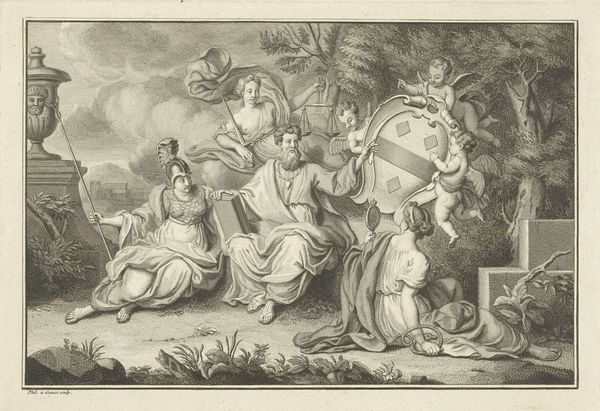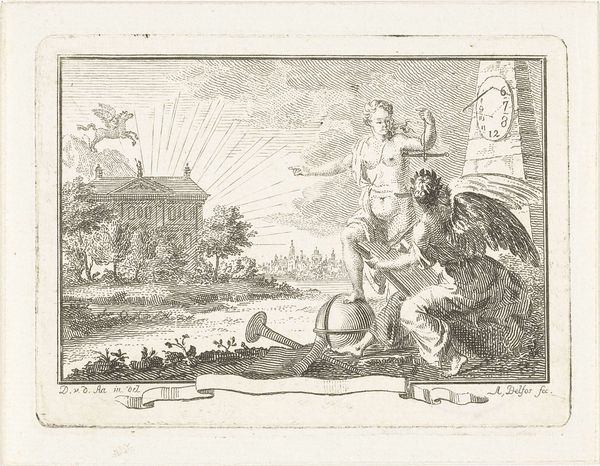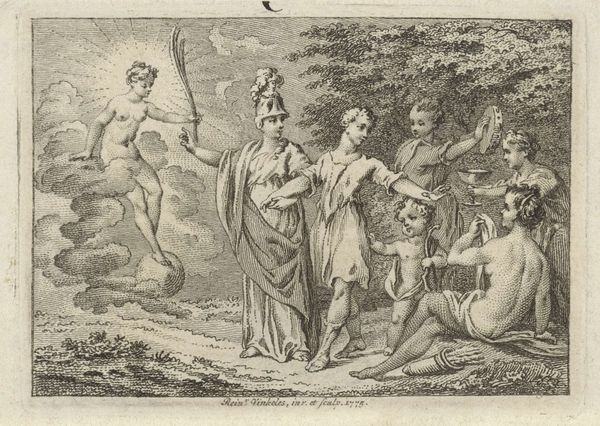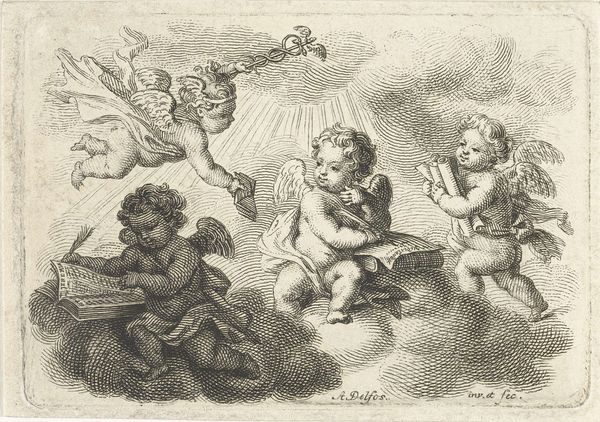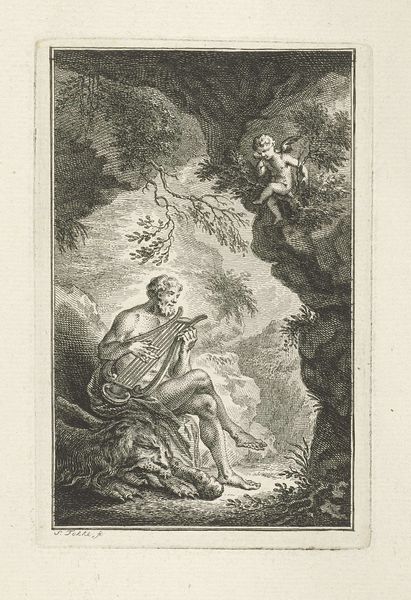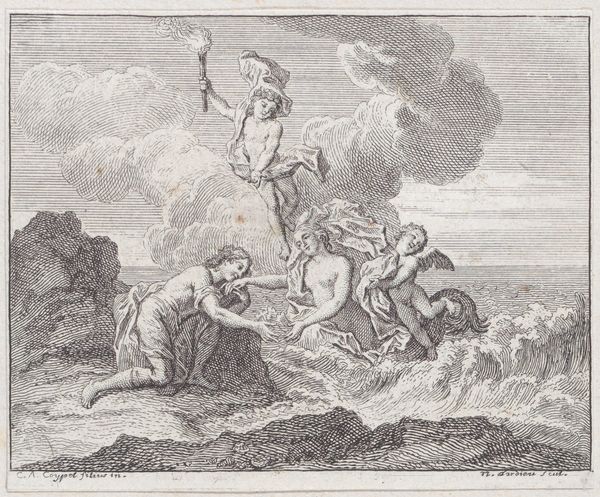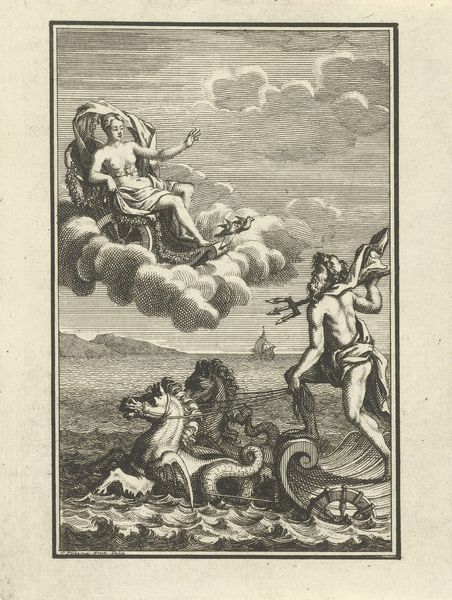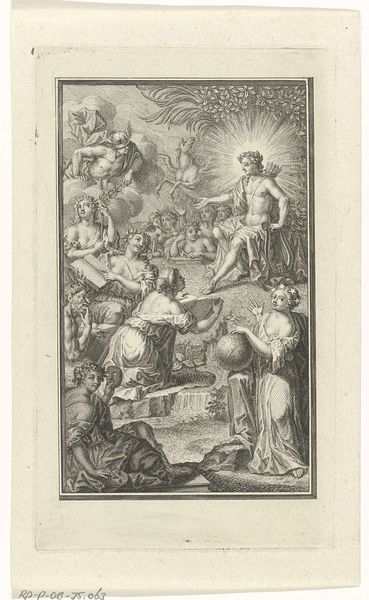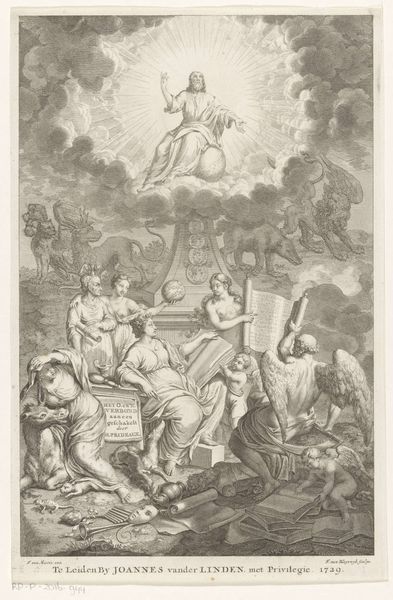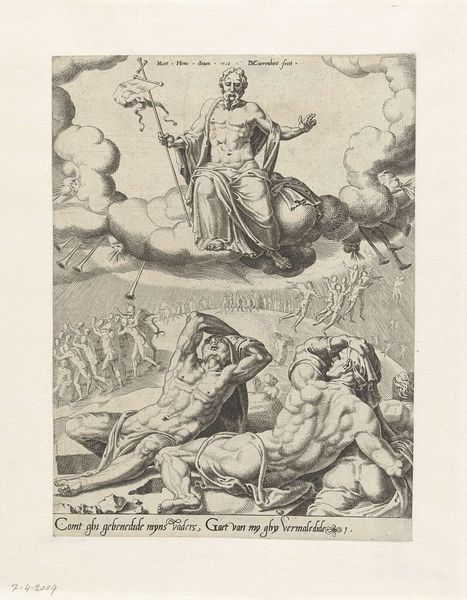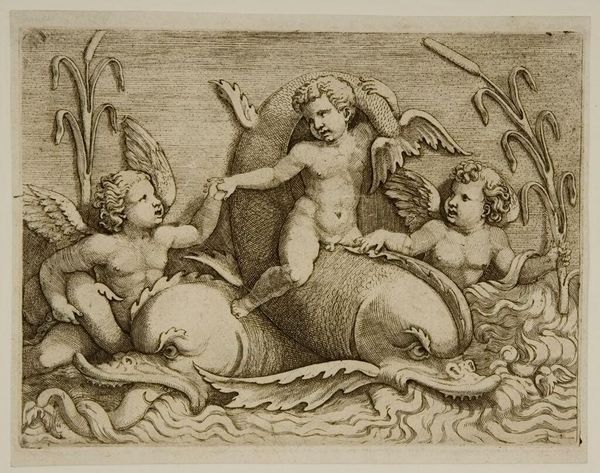
#
pen drawing
#
mechanical pen drawing
#
pen illustration
#
pen sketch
#
old engraving style
#
personal sketchbook
#
pen-ink sketch
#
pen work
#
sketchbook drawing
#
sketchbook art
Dimensions: height 68 mm, width 94 mm
Copyright: Rijks Museum: Open Domain
Curator: This delightful pen drawing, titled "Twee putti bij gehelmd wapenschild," was created in 1752 by Simon Fokke, and it now resides at the Rijksmuseum. What are your immediate impressions? Editor: It’s like stumbling upon a whispered secret from a bygone era, a snapshot from a dream, captured in ink. The atmosphere, for me, is tenderly melancholic, like a lullaby sung at dusk, cradling memories both sweet and tinged with fading. Curator: Tell me more, especially focusing on the visual elements. Editor: Immediately the cherubic figures pull you in; putti. There is a sense of childhood innocence contrasted by symbols of lineage and potential military power like the shield. Then you have the heraldry that feels heavy and the snake in the corner introduces chaos or earthly connection. Curator: The duality is striking. Fokke has loaded it with imagery. Note how the putto on the left holds what seems to be a very large book, illuminated by the quill sticking out from his head. And what to make of the all-seeing eye? Editor: Precisely! These weren't merely decorations but narrative devices meant to stir up thoughts of personal or national pride. It whispers of dynastic legacy and strength but asks us to interpret these values via children. It introduces the possibility of playfulness as a powerful weapon. The birds on the crest—doves, perhaps—infuse that heraldic structure with peaceful connotations, nestled beneath an almost radiant sun. It suggests enlightenment illuminating even ancestral burdens. Curator: What intrigues me is the overall flatness. Despite all these details it feels oddly two-dimensional. There’s little depth. Perhaps that was deliberate. Like emblems frozen in time? Editor: Perhaps he seeks to preserve them not as lived realities but as archetypes—distant, perhaps unobtainable, ideals cast in the nostalgic amber of heritage. The piece operates as an allegorical theater. It shows more than it lives. Curator: The detail in the pen work is so refined, so precise! Knowing it’s from 1752… it feels very relevant. A playful interpretation of tradition and inheritance. Editor: Absolutely, and I'm left wondering: what did Fokke want us to consider? He certainly handed us an encoded tale with delicate humor.
Comments
No comments
Be the first to comment and join the conversation on the ultimate creative platform.
